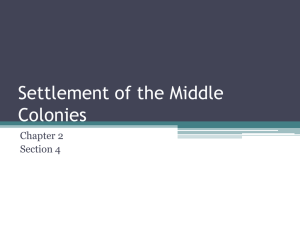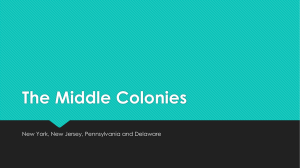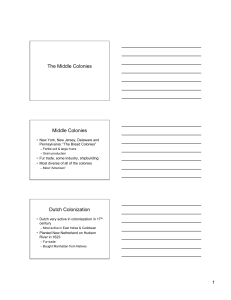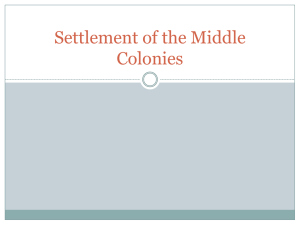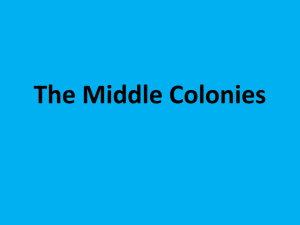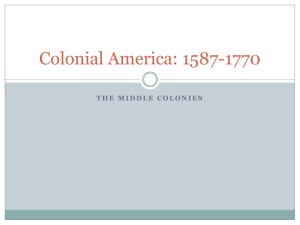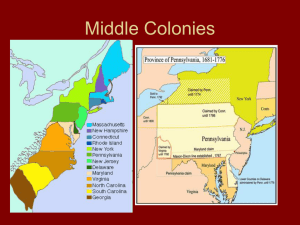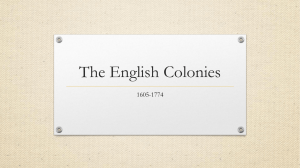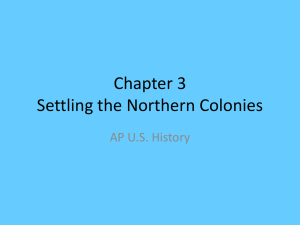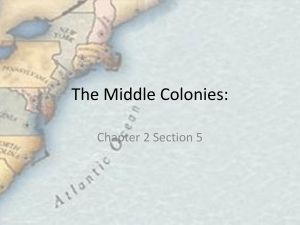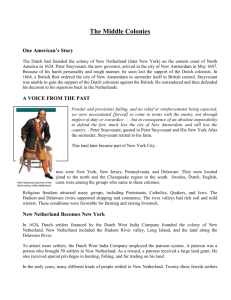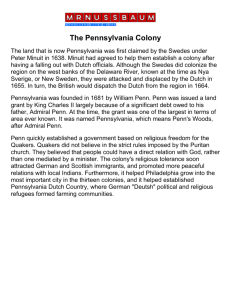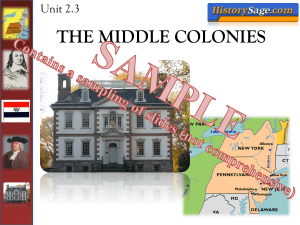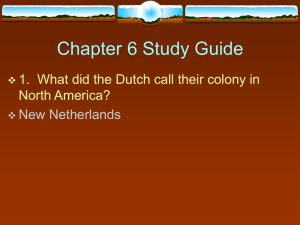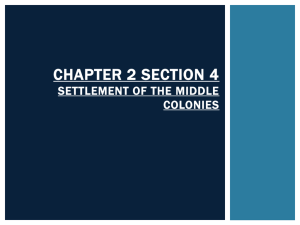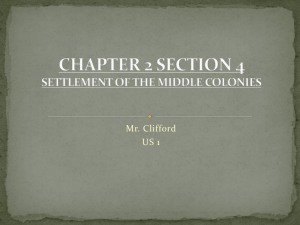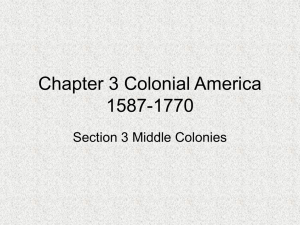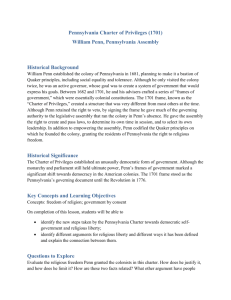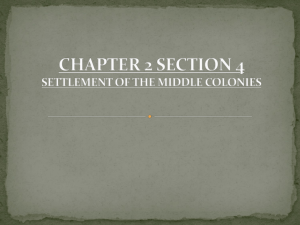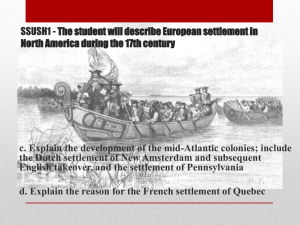File
advertisement
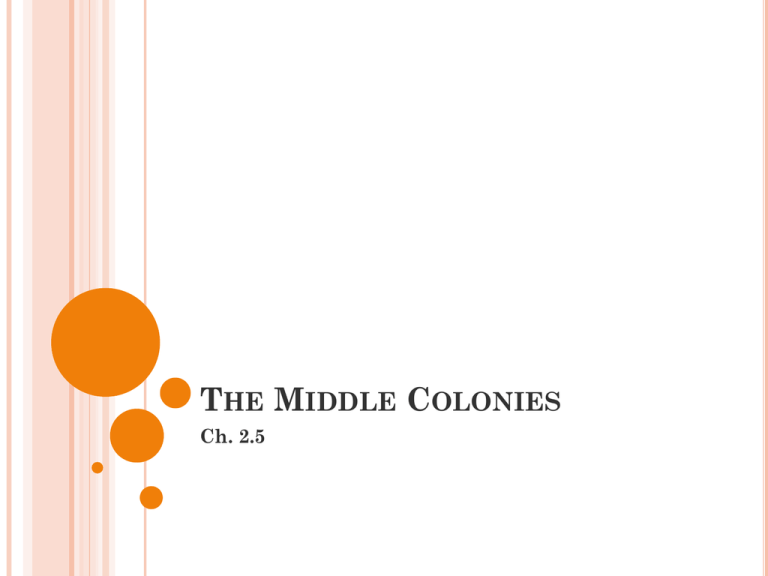
THE MIDDLE COLONIES Ch. 2.5 OBJECTIVES Explain how Dutch New Netherland became English New York. Describe William Penn’s relationship with Indians in Pennsylvania. Compare and contrast the Pennsylvania Colony to other colonies. KEY PARTS Dutch Establish New Netherland New Sweden Is Founded The English Conquest William Penn Founds Pennsylvania Diversity In the Middle Colonies READ SECTION 2.5 Take 15 min to read over the section. As you read compare and contrast the push and pull factor. Also explain some of the Christian values that William Penn expresses in this section. DUTCH ESTABLISH NEW NETHERLAND In 1609 Dutch merchants sent ships across the Atlantic into the Hudson River to trade for furs with the Indians. They establish a permanent settlement at Fort Nassau. (later called fort orange) To guard the mouth of the river the Dutch built New Amsterdam at the tip of Manhattan Island in 1625 CONT. New Amsterdam had the finest harbor on the Atlantic coast. Largest town in the colony’s thus far and a major seaport. Also they constructed government headquarters. The Dutch did not send out any missionary effort to convert Indians to Christianity like the English, French and Spanish. PUSH AND PULL FACTORS Despite an appealing location and religious tolerance the Dutch colony attracted few immigrants. The Dutch did not have any real push factors due to the fact they were used to and able to have a high standard of living in their country. The colonies did not offer much pull factor to the Dutch because they didn’t have very much religious persecution and hundreds of roaming poor people. SWEDEN IS FOUNDED In 1683 traders founded New Sweden on the lower Delaware River. This was a dual economy with fur and grain goods. Some of the colonists were Swedes but most were from Finland under Swedish rule. Expanded to both sides of the Delaware River but were not able to hold this land with only 500 colonist. They were forced to surrender by a Dutch governor with seven warships. ENGLISH CONQUEST In 1664 the Dutch took over New Netherland and called it New York after the Duke of York. This was a proprietary colony. New Amsterdam became the city of New York and Fort Orange became Albany. The Duke of York also proclaimed the land between the Hudson and Delaware rivers as a distinct new colony called New Jersey, primarily made up of Puritans, Scots and Quakers. WILLIAM PENN FOUNDS PENNSYLVANIA It began as a debt paid to William Penn by King Charles II. William Penn was a very wealthy Quaker, which is atypical to what is considered a normal Quaker. Quakers sought out the “inner light” to understand the Bible. They also considered women spiritually equal to men. CONT. In 1680 the king granted Penn the land west of the Delaware River as the colony of Pennsylvania. (Penn’s Woods) In 1682 Penn arrived with 2000 colonists to his new capital of Philadelphia. By 1700 the colonist reached 17,000 due to the fertile land and navigable river. Unlike other colonial leaders, Penn treated the Native Americans with respect and paid them for the land that he took. DIVERSITY IN THE MIDDLE COLONIES The middle colonies were the most ethnically diverse out of all the colonies. There was no one single ethnic group or specific religious denomination in most all of the middle colonies. This diversity violated traditional belief that political order depended on ethnic and religious uniformity.
